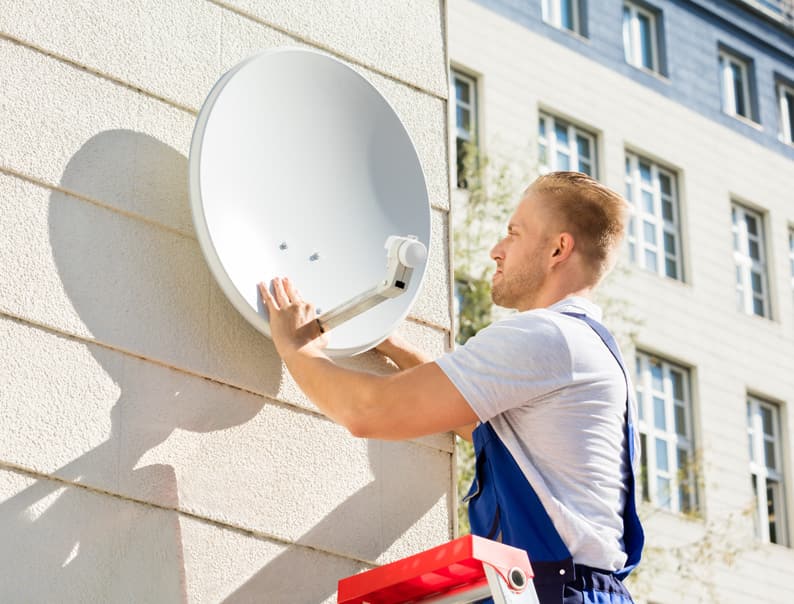A coaxial cable or a coax is a type of cable that is used as transmission lines for radio frequency, video, and data signals. Traditionally, they have been used as feed lines to connect transmitters and receivers with antennas, internet connections, digital audio and cable television signals.
This is why such cables are used in almost every home for television and internet connections, as well as in industrial settings for Local Area Networks. It is one of the most preferred types of cable because of its shielding and resistance to signal interferences from motors and other electronic equipment.
It has multiple layers namely an inner conductor, an insulating layer, a conductive shielding and an insulating outer jacket. Most coaxial cables even have outer jackets that are UV, chemical, halogen and flame resistant, making it the best option, even for industrial settings. Its shielded design even allows for quick data transmission without succumbing to the interference or damage from outside or environmental factors.
They work by carrying data into the centre conductor while the surrounding layers of shielding (which is collectively known as the shield, restrict any attenuation loss and help reduce EMI. The first layer, meanwhile, provides distance and insulation between the core conductor and the outer layers.
PRICE MATCH GUARANTEE!
Free Estimates for new installations
Call Now!
What Does A Coaxial Cable Look Like?
Coax cables have a distinct thick, round shape due to its interior insulation layer. Because of its size, its look also differs significantly from other cable types.
Coaxial cables come in many sizes, but the most common sizes are the RG-59, RG-11, and RG-6 cables. For non-industrial use, the most common coax cable used is the RG6 cable, while industrial installers, on the other hand, may use thicker cables like the RG11.
As for the colour, a coaxial cable normally comes in black, white or brown.
Coaxial Cable Types and What Exactly They Are Used For
As mentioned above, coax cables are classified by their sizes. Here is a quick overview of what each coax cable type is used for.
- RG-6 Coaxial Cables – RG6 cables are ideal for television, the internet, and digital video. Because RG-6 cables are made with a different kind of shielding and have an impedance of 75 Ohm, they can carry GHz signals more effectively, making them best for tv aerials or domestic television, internet connections, and digital video signals.
- RG-11 Coaxial Cables – Such cables are best used for HDTV. Because it offers a higher gauge which provides more space for signals to transfer, it is adept at transferring strong HD signals at high speed. It is also often used as a long-length backbone cable. End-users of RG-11 coax cables benefit from higher signal quality not just for TV, cable, and internet transmission.
- RG-59 Coaxial Cables – This kind of cable is best for CCTV systems. While RG6 cables can run longer distances without loss to video signal, RG-59 cables are much convenient to work with.
- RF Coaxial Cables – An RF or Radio Frequency coaxial cable is used to carry radio frequency signals. These cables are the standard input cable on TV sets. It usually has a coax plug or pin, which you can simply plug to the RF input on the device.
Coaxial Cable Connectors, Coaxial Splitters and Coaxial Ports
Cable Connectors
Coaxial cable connectors are used to connect your coax cable to another device while maintaining its shielding. These connectors could be classified into male or female. Male connectors have metal pins which protrude from the centre, while female connectors have a recessed hole where the pin is plugged into.
These connectors are used for RF equipment, test instruments, radio, television and video signal, mobile phone connections, broadcast communications systems and many more.
Coaxial Splitters
Because coaxial cable lines are produced to provide a signal to power a singular device, you will encounter a problem if you try using it to power more than one device. Coaxial splitters are used when there is more than one device that requires a signal. True to its name, it is designed to split the signal from one coaxial cable towards several lines to connect to multiple devices.
Coaxial Ports
A coax port is a single female RCA connector on a device. It will most likely be labelled as “coaxial,” “digital out” or “digital in.” This port is usually colour-coded orange or black, where a male coax is to be plugged in.
The Advantages and Disadvantages of Coaxial Cables
Coaxial cables are pretty advantageous. Such cables are inexpensive compared to fibre optic cables, durable, easy to install, and easy to expand with a cable extension kit. Additionally, coax cables have good resistance to EMI and RFI, lower error rates, as well as a transfer capacity of approximately 10mbps.
Moreover, coaxial cables are beneficial for both analogue and digital transmission, as compared to twisted pair cables and fibre optic cables, which are only capable of supporting analogue and digital, respectively.
However, coaxial cables still have a few drawbacks. Some of which come to mind are its susceptibility to total system or network failure, bulkiness, stiffness, and vulnerability to security breaches.
Final Thoughts
Now that you’ve got a much clearer understanding on what a coaxial cable is for, you’re probably ready to start on that DIY project that has got you looking up coaxial cables in the first place. However, if you are planning on installing a TV aerial, setting up a CCTV system in your home, or simply looking to extend your tv broadband, it would probably much safer for you to put the coaxial cable down and let the professionals work on it. This will not only ensure your safety but also save you all the frustration of trying to get everything done yourself!


